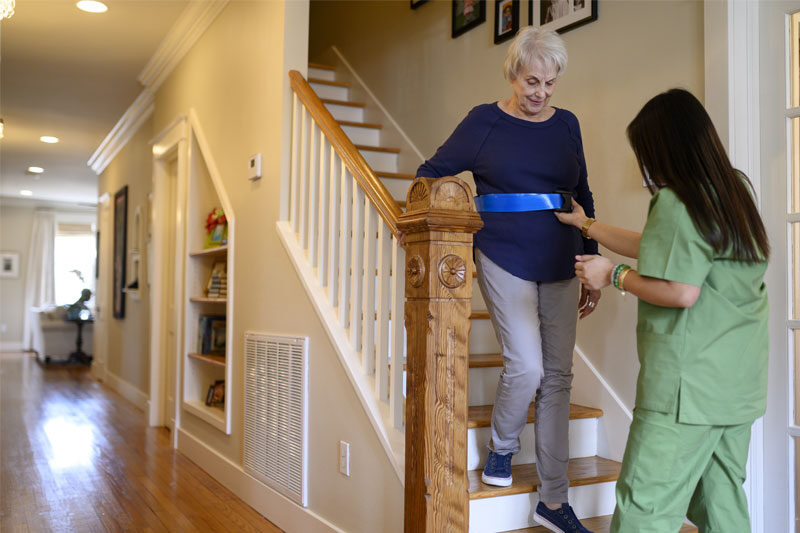The future of fall detection technology is a topic of growing importance, especially for family caregivers concerned about the well-being of their elderly loved ones. With advances in technology, fall detection is becoming more sophisticated and reliable, offering peace of mind and enhanced safety. As we look towards the future, it is essential to understand how these innovations will impact caregiving and elder safety.
In recent years, the development of fall detection devices has significantly evolved. Early versions were often bulky and unreliable, but today’s technology is sleek, accurate, and user-friendly. The question now is, what does the future hold for these life-saving devices?

The Importance of Fall Detection
Falls are a major concern for the elderly population, as they can lead to serious injuries and a decline in overall health. According to the World Health Organization, falls are the second leading cause of accidental or unintentional injury deaths worldwide. This statistic highlights the critical need for effective fall detection solutions.
For family caregivers, the fear of a loved one falling is ever-present. Traditional methods of monitoring, such as check-in calls or visits, can be supplemented with advanced fall detection systems, providing a safety net that can alert caregivers and emergency services in real time.
Technological Advancements in Fall Detection
Wearable Devices
Wearable technology is at the forefront of fall detection advancements. Devices such as smartwatches and fitness trackers are now equipped with sensors that can detect falls and send alerts. These wearables are designed to be comfortable and discreet, encouraging regular use by the elderly.
Smart Home Integration
The integration of fall detection technology within smart homes offers a seamless safety solution. By utilizing IoT sensors strategically placed throughout the home, falls can be detected without the need for wearable devices. This approach not only enhances safety but also respects the privacy of the individual. For more insights on IoT applications, check out IoT Sensors for Daily Life.
AI and Machine Learning
Artificial Intelligence (AI) and machine learning are playing a significant role in the evolution of fall detection. These technologies enable systems to learn from previous data and improve their accuracy over time. AI can differentiate between a true fall and other activities, reducing false alarms and ensuring timely assistance.
Privacy Concerns and Solutions
One of the primary concerns with fall detection technology is privacy. Many individuals are hesitant to adopt systems that they perceive as invasive. However, new solutions are being developed to address these concerns. For instance, camera-free detection systems use radar or Wi-Fi signals to monitor movements without capturing images, ensuring privacy while maintaining safety. Explore more about privacy-friendly solutions [here](https://motions.living/fall-detection-without-cameras-privacy-friendly-solutions-for-elderly-safety/) style=’color: blue;’ rel=’dofollow’>Fall Detection without Cameras.
The Role of Family Caregivers
Family caregivers play a pivotal role in the adoption and success of fall detection technology. By staying informed about the latest advancements, caregivers can make educated decisions about which systems best suit their needs and the needs of their loved ones.
Moreover, caregivers can help elderly family members adapt to new technologies, ensuring they feel comfortable and confident in using these devices. This support can significantly enhance the effectiveness of fall detection systems.
Challenges and Future Directions
Overcoming Technological Barriers
Despite the progress, there are still challenges to overcome. Technological barriers, such as device compatibility and connectivity issues, can hinder the effectiveness of fall detection systems. Ongoing research and development are focused on creating more robust and reliable solutions.
Cost Considerations
Cost is another significant factor that affects the adoption of fall detection technology. While prices are gradually decreasing, making these systems more accessible, affordability remains a concern for many families. Future advancements should aim to offer cost-effective options without compromising quality.
Conclusion
The future of fall detection technology is promising, with numerous innovations that have the potential to transform elderly care. As technology continues to advance, we can expect more accurate, reliable, and user-friendly solutions that enhance safety and provide peace of mind for family caregivers.
By staying informed and embracing these technological advancements, caregivers can ensure their loved ones are protected, allowing them to maintain their independence and quality of life.

FAQs
What are the benefits of fall detection technology?
Fall detection technology provides real-time alerts, ensuring timely assistance and reducing the risk of serious injuries. It offers peace of mind to caregivers and enhances the safety and independence of the elderly.
How does AI improve fall detection systems?
AI improves fall detection systems by analyzing data and differentiating between true falls and other activities, reducing false alarms and increasing accuracy.
Are fall detection devices expensive?
The cost of fall detection devices varies. While some systems can be expensive, ongoing advancements aim to provide more affordable options without compromising quality.
This article contains affiliate links. We may earn a commission at no extra cost to you.






